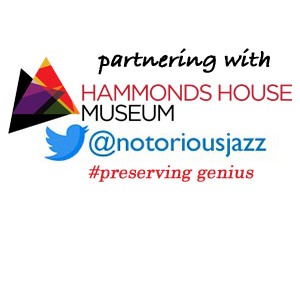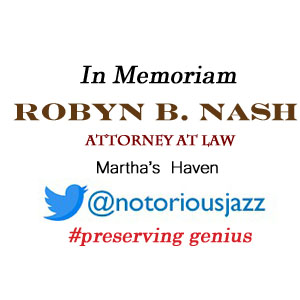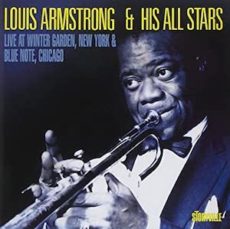
Daily Dose Of Jazz…
Augustus “Gus” Aiken was born on July 26, 1902 in Charleston, South Carolina. He started playing trumpet with the Jenkins Orphanage band.
He was first recorded professionally in 1919. In the 1920s he worked with several groups, but his best known work would be with Louis Armstrong. He went on to play with Sid Catlett, Roy Eldridge, and Elmer Snowden before his career declined. The end of the Big Band era and the rise of rock and roll is seen as causing the decline.
Trumpeter and cornetist Gus Aiken, who also played blues, passed away on April 1, 1973 in New York City.
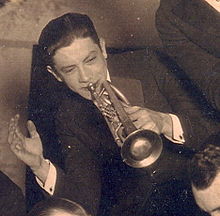
Daily Dose Of Jazz…
Emmett Louis Hardy was born in Gretna, Louisiana on June 12, 1903 and lived much of his life in the Algiers neighborhood on the west bank of New Orleans, Louisiana. A child prodigy, he was playing marvelously in his early teens. A musical highlight was a 1919 cutting contest where, after long and intense struggle, he succeeded in outplaying Louis Armstrong.
In his early teens he was a member of the Papa Jack Laine band, then worked in the Carlisle Evans Band and Norman Brownlee’s Orchestra of New Orleans. He belonged to a small band that worked with singer Bee Palmer. After moving to Chicago, Illinois he became a member of the New Orleans Rhythm Kings. After returning to New Orleans he led his own band and played in the band of Norman Brownlee.
Hardy did not appear on any of the Rhythm Kings recording sessions, and never made any commercial recordings before his early death. He did metal work, made his own mouthpieces for his horn, and modified his cornet to add an additional spit-valve. When advancing tuberculosis started to make his breathing difficult, Hardy taught himself banjo so he could continue playing music.
Hardy and some of his musician friends made some home recordings on wax phonograph cylinders for their own amusement. As Hardy’s tuberculosis worsened and his death seemed inevitable, the friends decided to preserve the cylinders as a memento of Hardy’s playing. At least one cylinder survived to the start of the 1950s, however when Tulane University’s Jazz Archive was established in the late 1950s, however, a diligent search failed to turn up any of these recordings, which are, alas, presumed lost forever.
After returning to New Orleans he led his own band and played in the band of Norman Brownlee. Though he never recorded with Brownlee, he was a big influence on his replacement, Sharkey Bonano. Cornetist Emmett Hardy passed away from tuberculosis in New Orleans, just four days after his 22nd birthday on June 16, 1925. He was buried in Gretna.
More Posts: bandleader,cornet,history,instrumental,jazz,music
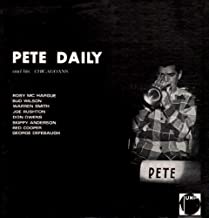
Daily Dose Of Jazz…
Pete Daily was born on May 5, 1911 in Portland, Indiana. He started his career in Chicago, Illinois in 1930 playing with various bands in and around the city. He was the leader of Pete Daily and his Chicagoans in the 1940s and 50s and recorded for Capitol Records as Dixie by Daily and Pete Daily’s Dixieland Band. They also recorded on the Jump and Decca labels in the 1950s.
In 1942, he moved to the West Coast and, after service in World War II, formed the Chicagoans. He played long engagements at several Hollywood night clubs in the 1950s such as Sardis, The Royal Room, and the Astors in Studio City. He continued to play during the 1970s until a stroke in 1979 forced him to retire.
During the filming of Pete Kelly’s Blues, actor Jack Webb, the cornet-playing star of the film, repeatedly went to the nightclub where Daily performed to study his mannerisms for his role in the film. The band which recorded the soundtrack appeared at Dixieland festivals supported by Pete Daily’s band.
His driving style on the cornet endeared him to generations of Dixieland Jazz enthusiasts. Cornetist and valve trombonist Pete Daily, who played swing and dixieland, passed away on August 23, 1981.
More Posts: bandleader,cornet,history,instrumental,jazz,music,valve trombone
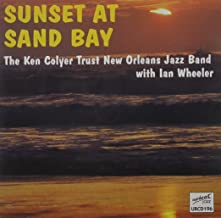
Daily Dose Of Jazz…
Kenneth Colyer was born on April 18, 1928 in Great Yarmouth, Norfolk, England, but grew up in Soho, London, and served as a member of his church choir. Listening to his elder brother’s jazz records which influenced him. He joined the Merchant Navy at 17, travelled around the world and heard famous jazz musicians in New Orleans, Louisiana.
In the UK, Colyer played with various bands and joined the Crane River Jazz Band in 1949 with Ben Marshall, Sonny Morris, Pat Hawes, John R. T. Davies, Julian Davies, Ron Bowden and Monty Sunshine. Rejoining the Merchant Navy, and jumping ship in Mobile, Alabama, he travelled to New Orleans, where he played with his idols in George Lewis’ band. Though offered the job of lead trumpeter on a tour, he was caught by the authorities, detained and deported.
Ken went on to join the Chris Barber Band and made their first recordings on the Storyville in 1953. Parting company the following year, then briefly joined a band in the mid-1950s with clarinetist Acker Bilk and trombonist Ed O’Donnell.
Then he put together his own band with Mac Duncan, Ian Wheeler, Johnny Bastable, Ron Ward, Colin Bowden and Ray Foxley. This band played together until the early 1960s before incorporating a new lineup.
After a bout with stomach cancer in 1972 he stopped being a bandleader but continued to work, occasionally associated with Chris Blount’s New Orleans Jazz Band. A biography, Goin’ Home, was compiled by Mike Pointon and Ray Smith. Trumpeter and cornetist Ken Colyer, who was known for skiffle interludes and devoted to New Orleans jazz, passed away on March 8, 1988.
More Posts: bandleader,cornet,history,instrumental,jazz,music,trumpet
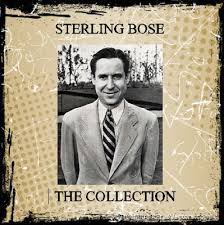
Daily Dose Of Jazz…
Sterling Belmont “Bozo” Bose was born on September 23, 1906 in Florence, Alabama and his style was heavily influenced by Bix Beiderbecke and changed little over the course of his life.
His early experience came with Dixieland jazz bands in his native Alabama before moving to St. Louis, Missouri in 1923. He played with the Crescent City Jazzers, the Arcadian Serenaders, and the Jean Goldkette’s Orchestra in 1927-28 after the departure of Beiderbecke. Following this he worked in the house band at radio station WGN in Chicago, Illinois before joining Ben Pollack from 1930 to 1933. He also worked with Eddie Sheasby in Chicago.
Moving to New York City in 1933, Bose had many gigs in the city during the 1930s to the mid 1940s, including time with Joe Haymes, Tommy Dorsey, Ray Noble, Benny Goodman, Lana Webster, Glenn Miller, Bob Crosby, Bobby Hackett, Bob Zurke, Jack Teagarden, Bud Freeman, George Brunies, Bobby Sherwood, Miff Mole, Art Hodes, Horace Heidt, and ending with Tiny Hill in 1946.
Following this period he did some further freelancing for the next two years in Chicago and New York, and finally moved to Florida in 1948, setting up his own bands there. Suffering from an extended period of illness in the 1950s, trumpeter and cornetist Sterling Bose, whose nickname was Bozo, eventually committed suicide in June of 1958. in St. Petersburg, Florida.
More Posts: bandleader,cornet,history,instrumental,jazz,music,trumpet



